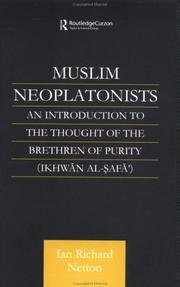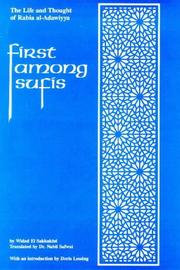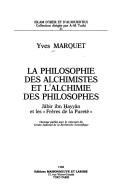| Listing 1 - 10 of 11 | << page >> |
Sort by
|
Book
ISBN: 3805903863 9783805903868 Year: 1976 Volume: 21 Publisher: Berlin : Schweitzer,
Abstract | Keywords | Export | Availability | Bookmark
 Loading...
Loading...Choose an application
- Reference Manager
- EndNote
- RefWorks (Direct export to RefWorks)
Gabriel --- Canon law --- -Law, Medieval --- Nestorian Church --- -Medieval law --- Public law (Canon law) --- Law --- Ecclesiastical law --- Rescripts, Papal --- Eastern churches --- Government --- Catholic Church --- Gabriel Metropolitan of Basra --- Law, Medieval. --- Kerkelijke rechtspraak. --- Nestorianen. --- Syrische handschriften. --- Kanon (Kirchenrecht) --- Nestorianismus. --- Nomokanon. --- Quellenkritik. --- Sammlung. --- Eastern churches. --- Gabriel, --- Gabriel (von Baṣrā) --- Church of the East --- Government. --- -Eastern churches --- Kanon (Kirchenrecht). --- Gabriel (von Baṣrā). --- Law, Medieval --- Medieval law --- Canon law, Eastern --- Old East Syrian Church --- Assyrian Church of the East --- Chaldean Catholic Church --- Gabriel - Metropolitan of Basra
Book
ISBN: 0042970431 9780042970431 Year: 1982 Publisher: London Allen and Unwin
Abstract | Keywords | Export | Availability | Bookmark
 Loading...
Loading...Choose an application
- Reference Manager
- EndNote
- RefWorks (Direct export to RefWorks)
Ikhwān al-Ṣafāʾ --- Ikhwan al-Safa' --- Ikhwān al-Ṣafāʼ. --- Ikhwān al-Ṣafāʼ, Basra --- Ichwán es-Safâ --- Ikhvān al-Ṣafā --- Aḥim ha-neʼemanim --- Ihwān al-Safaʼ --- Frères de la Pureté --- Frères de la Sincérité --- Ikhwān al-Ṣafā, wa-Khillān al-Wafā, wa-Ahl al-ʻAdl, wa-Abnāʼ al-Ḥamd --- Exvān al-Ṣafā --- Pure Brethren of Basra --- إخوان الصفا --- إخوان الصفاء، البصرة --- اخوان الصفاء --- اخوان صفا --- Brethren of Purity --- Ikhvan as-safa
Multi
ISBN: 8439944934 9788439944935 Year: 1975 Publisher: Alger : Société nationale d'édition et de diffusion,
Abstract | Keywords | Export | Availability | Bookmark
 Loading...
Loading...Choose an application
- Reference Manager
- EndNote
- RefWorks (Direct export to RefWorks)
Ikhwān al-Ṣafāʾ --- Imamate --- Ikhwan al-Safa' --- Imamate. --- Islam --- Shīʻah --- Doctrines --- Ikhwān al-Ṣafāʼ. --- Ikhwān al-Ṣafāʼ, Basra --- Ichwán es-Safâ --- Ikhvān al-Ṣafā --- Aḥim ha-neʼemanim --- Ihwān al-Safaʼ --- Frères de la Pureté --- Frères de la Sincérité --- Ikhwān al-Ṣafā, wa-Khillān al-Wafā, wa-Ahl al-ʻAdl, wa-Abnāʼ al-Ḥamd --- Exvān al-Ṣafā --- Pure Brethren of Basra --- إخوان الصفا --- إخوان الصفاء، البصرة --- اخوان الصفاء --- اخوان صفا --- Brethren of Purity --- Ikhvan as-safa

ISBN: 1138147176 1136853901 1315028859 1136853839 9781136853906 0700714669 9780700714667 9781315028859 9781136853975 9781138147171 Year: 2013 Publisher: London ; New York : Routledge,
Abstract | Keywords | Export | Availability | Bookmark
 Loading...
Loading...Choose an application
- Reference Manager
- EndNote
- RefWorks (Direct export to RefWorks)
The tenth or eleventh century group of the Brethren of Purity (Ikhwan al Safa) are as well known in the Arab world as Darwin, Marx and Freud in the west. Designed as an introduction to their ideas, this book concentrates on the Brethren's writings, analyzing the impact on them of thinkers such as Pythagoras, Plato, Aristotle and the Neoplatonists. Ian Netton traces the influences of Judaism and Christianity, and controversially this book argues that the Brethren of Purity did not belong to the Ismaili branch of Islam as is generally believed.
Islamic philosophy. --- Philosophy, Medieval. --- Medieval philosophy --- Scholasticism --- Arabic philosophy --- Muslim philosophy --- Philosophy, Islamic --- Philosophy, Arab --- Ikhwān al-Ṣafāʼ. --- Ikhwān al-Ṣafāʼ, Basra --- Ichwán es-Safâ --- Ikhvān al-Ṣafā --- Aḥim ha-neʼemanim --- Ihwān al-Safaʼ --- Frères de la Pureté --- Frères de la Sincérité --- Ikhwān al-Ṣafā, wa-Khillān al-Wafā, wa-Ahl al-ʻAdl, wa-Abnāʼ al-Ḥamd --- Exvān al-Ṣafā --- Pure Brethren of Basra --- إخوان الصفا --- إخوان الصفاء، البصرة --- اخوان الصفاء --- اخوان صفا --- Brethren of Purity --- Ikhvan as-safa
Book
ISBN: 1350989002 0857726501 9780857726506 9780857738868 0857738860 1784530409 Year: 2018 Publisher: London ; New York : Bloomsbury Publishing,
Abstract | Keywords | Export | Availability | Bookmark
 Loading...
Loading...Choose an application
- Reference Manager
- EndNote
- RefWorks (Direct export to RefWorks)
"In tenth-century Iraq, a group of Arab intellectuals and scholars known as the Ikhwan al-Safa began to make their intellectual mark on the society around them. A mysterious organisation, the identities of its members have never been clear. But its contribution to the intellectual thought, philosophy, art and culture of the era - and indeed subsequent ones - is evident. In the visual arts, for example, Hamdouni Alami argues that the theory of human proportions which the Ikwan al-Safa propounded (something very similar to those of da Vinci), helped shape the evolution of the philosophy of aesthetics, art and architecture in the tenth and eleventh centuries CE, in particular in Egypt under the Fatimid rulers. With its roots in Pythagorean and Neoplatonic views on the role of art and architecture, the impact of this theory of specific and precise proportion was widespread. One of the results of this extensive influence is a historic shift in the appreciation of art and architecture and their perceived role in the cultural sphere. The development of the understanding of the interplay between ethics and aesthetics resulted in a movement which emphasised more abstract and pious contemplation of art, as opposed to previous views which concentrated on the enjoyment of artistic works (such as music, song and poetry). And it is with this shift that we see the change in art forms from those devoted to supporting the Umayyad caliphs and the opulence of the Abbasids, to an art which places more emphasis on the internal concepts of 'reason' and 'spirituality'.Using the example of Fatimid art and views of architecture (including the first Fatimid mosque in al-Mahdiyya, Tunisia), Hamdouni Alami offers analysis of the debates surrounding the ethics and aesthetics of the appreciation of Islamic art and architecture from a vital time in medieval Middle Eastern history, and shows their similarity with aesthetic debates of Italian Renaissance."--Bloomsbury Publishing.
Islamic art. --- Islamic architecture. --- Arab architecture --- Architecture, Arab --- Architecture, Islamic --- Architecture, Moorish --- Architecture, Muslim --- Architecture, Saracenic --- Moorish architecture --- Muslim architecture --- Saracenic architecture --- Religious architecture --- Art, Islamic --- Art, Saracenic --- Muslim art --- Saracenic art --- Art --- Islamic civilization. --- Ikhwān al-Ṣafā' --- History. --- Islamic countries --- Intellectual life. --- Civilization, Islamic --- Muslim civilization --- Civilization --- Civilization, Arab --- Ikhwān al-Ṣafāʼ, Basra --- Ichwán es-Safâ --- Ikhvān al-Ṣafā --- Aḥim ha-neʼemanim --- Ihwān al-Safaʼ --- Frères de la Pureté --- Frères de la Sincérité --- Ikhwān al-Ṣafā, wa-Khillān al-Wafā, wa-Ahl al-ʻAdl, wa-Abnāʼ al-Ḥamd --- Exvān al-Ṣafā --- Pure Brethren of Basra --- إخوان الصفا --- إخوان الصفاء، البصرة --- اخوان الصفاء --- اخوان صفا --- Brethren of Purity --- Ikhvan as-safa --- Muslim countries

ISBN: 0900860456 9780900860454 Year: 1995 Publisher: London Octagon Press
Abstract | Keywords | Export | Availability | Bookmark
 Loading...
Loading...Choose an application
- Reference Manager
- EndNote
- RefWorks (Direct export to RefWorks)
Sufis --- Soufis --- Biography. --- Biographies --- Rabi'ah al-'Adawiyah, --- 297*2 --- Soefisme --- 297*2 Soefisme --- Rābiʻah al-ʻAdawīyah, --- Rabi`a al-`Adawiyya al-Qaysiyya --- Sufism --- Biography --- Rābiʻa al-ʻAdawīya, --- Rabiʻa al-ʻAdawiyya al-Qaysiyya, --- Rābiʻah ʻAdavīyah, --- Rabiʻah al-ʻAdawīyah bint Ismāʻīl, Umm al-Khayr, --- Rabiah Basri, --- Rābiaha Basarī, --- Umm al-Khayr bint Ismāʻīl, --- رابعة العدوية --- رابعة العدوية، --- رابعه عدويه --- Baṣrah (Iraq) --- Al Baṣrah (Iraq) --- Basra (Iraq) --- بصرة (Iraq) --- Bassora (Iraq) --- Bassorah (Iraq) --- Bassra (Iraq) --- Busra (Iraq) --- Busrah (Iraq) --- Bussorah (Iraq) --- Sufis - Iraq - Basrah - Biography --- Soufisme --- Rabia al-adawiyya

ISBN: 270680954X 9782706809545 Year: 1988 Volume: 31 Publisher: Paris : G.-P. Maisonneuve & Larose,
Abstract | Keywords | Export | Availability | Bookmark
 Loading...
Loading...Choose an application
- Reference Manager
- EndNote
- RefWorks (Direct export to RefWorks)
Alchemy --- Ikhwān al-Ṣafāʾ --- Jābir ibn Ḥayyān --- -Metals, Transmutation of --- Philosophers' egg --- Philosophers' stone --- Stone, Philosophers' --- Transmutation of metals --- Chemistry --- Occultism --- Jabir ibn Hayyan. --- ʻAbd Allah al-Kūfī --- Ǧābir, Ḥayyān ibn --- Geber, --- Ḥayyān ibn Ǧābir --- Ibn Ḥayyān, Jābir --- Jābir ibn Ḥaiyān --- Jābir ibn Ḥaiyān al-Ṭarasūsī --- Jābir ibn Ḥayyān al-Ṭarasūsī --- Kūfī, ʻAbd Allah --- Ṭarasūsī, Jābir ibn Ḥayyān --- جابر بن حيان --- El Gebir --- Jaffir el Gebir --- Gebir, Jaffir --- Abu Mussa Jaffir el Sofi Gebir --- Gebir, Abu Mussa Jaffir el Sofi --- Jābir ibn Hayyān. --- Ikhwān al-Ṣafā. --- -Jabir ibn Hayyan. --- Metals, Transmutation of --- Jābir ibn Hayyān. --- Geber --- Ikhwān al-Ṣafā. --- Ikhwān al-Ṣafāʼ, Basra --- Ichwán es-Safâ --- Ikhvān al-Ṣafā --- Aḥim ha-neʼemanim --- Ihwān al-Safaʼ --- Frères de la Pureté --- Frères de la Sincérité --- Ikhwān al-Ṣafā, wa-Khillān al-Wafā, wa-Ahl al-ʻAdl, wa-Abnāʼ al-Ḥamd --- Exvān al-Ṣafā --- Pure Brethren of Basra --- إخوان الصفا --- إخوان الصفاء، البصرة --- اخوان الصفاء --- اخوان صفا --- Brethren of Purity --- Ikhvan as-safa --- Jâbir ibn Hayyân. --- Alchemy - Arab countries. --- ALCHIMIE --- PAYS ISLAMIQUES
Book
ISBN: 0691158533 1306081785 1400848164 9780691158532 0691168407 Year: 2013 Publisher: New Jersey Princeton University Press
Abstract | Keywords | Export | Availability | Bookmark
 Loading...
Loading...Choose an application
- Reference Manager
- EndNote
- RefWorks (Direct export to RefWorks)
Islam emerged amid flourishing Christian and Jewish cultures, yet students of Antiquity and the Middle Ages mostly ignore it. Despite intensive study of late Antiquity over the last fifty years, even generous definitions of this period have reached only the eighth century, whereas Islam did not mature sufficiently to compare with Christianity or rabbinic Judaism until the tenth century. Before and After Muhammad suggests a new way of thinking about the historical relationship between the scriptural monotheisms, integrating Islam into European and West Asian history. Garth Fowden identifies the whole of the First Millennium--from Augustus and Christ to the formation of a recognizably Islamic worldview by the time of the philosopher Avicenna--as the proper chronological unit of analysis for understanding the emergence and maturation of the three monotheistic faiths across Eurasia. Fowden proposes not just a chronological expansion of late Antiquity but also an eastward shift in the geographical frame to embrace Iran. In Before and After Muhammad, Fowden looks at Judaism, Christianity, and Islam alongside other important developments in Greek philosophy and Roman law, to reveal how the First Millennium was bound together by diverse exegetical traditions that nurtured communities and often stimulated each other.
Civilization, Ancient. --- Civilization, Medieval. --- Frühmittelalter. --- Islam. --- Islamic civilization. --- Monotheism --- Periodisierung. --- Religion and civilization --- Spätantike. --- History --- Eurasia --- History. --- Civilization, Medieval --- Civilization, Ancient --- Islamic civilization --- Civilisation médiévale --- Civilisation ancienne --- Religion et civilisation --- Civilisation islamique --- Islamic influences --- Influence islamique --- Religions. --- Mohammedanism --- Muhammadanism --- Muslimism --- Mussulmanism --- Religions --- Muslims --- Comparative religion --- Denominations, Religious --- Religion, Comparative --- Religions, Comparative --- Religious denominations --- World religions --- Civilization --- Gods --- Religion --- Abbasids. --- Achaemenids. --- Alois Riegl. --- America. --- Aristotelianism. --- Aristotle. --- Asia. --- Baghdad. --- Basra. --- Brethren of Purity. --- Christian Bible. --- Christian Rome. --- Christianity. --- East Rome. --- Edward Gibbon. --- Eurasia. --- Eurasian Hinge. --- Europe. --- First Millennium. --- Greece. --- Greek philosophy. --- Henri Pirenne. --- Ibn Sīnā. --- Iran. --- Josef Strzygowski. --- Judaism. --- Justinianic code. --- Latin Europe. --- Manicheism. --- Mazdaism. --- Mediterranean. --- Mountain Arena. --- Muhammad. --- North America. --- Peter Brown. --- Pisa. --- Qur'āan. --- Roman law. --- Tūs. --- Umayyads. --- archaeology. --- architectural history. --- art. --- commonwealths. --- empires. --- exegesis. --- late Antiquity. --- late antique studies. --- monotheism. --- patristic Christianity. --- philosophy. --- rabbinic Judaism. --- salvation. --- translation. --- To 1500 --- Asia --- Europe
Book
ISBN: 9780748692743 9780748692750 0748692754 9781306892001 1306892007 0748692746 1474400965 9781474400961 Year: 2014 Volume: *1 Publisher: Edinburgh Edinburgh University Press
Abstract | Keywords | Export | Availability | Bookmark
 Loading...
Loading...Choose an application
- Reference Manager
- EndNote
- RefWorks (Direct export to RefWorks)
The 9th-century essayist, theologian and encyclopaedist Amr b. Bahr al-Jahiz has long been acknowledged as a master of early Arabic prose writing. Many of his most engaging writings were clearly intended for a broad readership but were presented as letters to individuals. Despite the importance and quantity of these letters, surprisingly little academic notice has been paid to them. Now, Thomas Hefter takes a new approach in interpreting some of al-Jahiz's 'epistolary monographs'. By focussing on the varying ways in which he wrote to the addressee, Hefter shows how al-Jahiz hid his conversations on the page in order to guide (or manipulate) his actual readers and encourage them to engage with his complex materials. Key Features * Looks at letters from one of the most unique minds of the Abbasid era that cover sectarian and ethnic rivalries, ethical questions, intoxicating beverages and daily life *Relates al-Jahiz's experiments with the letter frame to his views on occupations, human geography and other issues of his day *Examines the role of self-parody in al-Jahiz's fictional conversations with his addressees *Explores the rich interplay of contending voices
Books and reading --- Arabic literature --- LITERARY CRITICISM --- Arabic literature. --- Books and reading. --- Intellectual life. --- Technique. --- History and criticism --- African. --- Jāḥiẓ, --- Criticism and interpretation. --- 750-1258. --- Islamic Empire --- Islamic Empire. --- Literary criticism --- Appraisal of books --- Books --- Choice of books --- Evaluation of literature --- Literature --- Reading, Choice of --- Reading and books --- Reading habits --- Reading public --- Reading --- Reading interests --- Reading promotion --- History and criticism. --- Appraisal --- Evaluation --- Jāḥiẓ, --- Abou Othman Amr ibn Bahr al-Djahiz de Basra, --- Abu Osman Amr ibn Bakhr alʹ-Basri alʹ-Dzhakhiz, --- Abū ʻUthmān ʻAmr bin Baḥr al-Fuqaymī al-Baḥrī, --- Abū ʻUthman ʻAmr ibn Baḥr al-Jāḥiẓ, --- Cāḥiẓ, Ebū ʻOs̲mān ʻAmr bin Baḥr, --- Djâh̲iz̲, --- Dzhakhiz, --- Ebu Osman Amr bin Bahr bin Mahbub bin Fezâre, --- Ǧāḥiẓ, --- Jahidh, Amr ibn Bahr, --- Jāḥiẓ, Abū ʻUthman ibn Baḥr, --- Jāḥiẓ, ʻAmr ibn Baḥr, --- Ŷāḥiẓ, --- أبو عثمان عمرو بن بحر الجاحظ --- الجاحظ --- الجاحظ ، عمرو بن بحر --- الجاحظ، --- الجاهظ --- جاحظ --- جاحظ، --- جاحظ، عمرو بن بحر --- جاهظ --- حاحظ --- عثمان عمر و بن بحر --- عمرو بن بحر الجاحظ --- غازي
Book
ISBN: 9780748683321 0748683321 9780748683338 074868333X 9780748683352 0748683356 0748695079 Year: 2021 Volume: *2 Publisher: Edinburgh
Abstract | Keywords | Export | Availability | Bookmark
 Loading...
Loading...Choose an application
- Reference Manager
- EndNote
- RefWorks (Direct export to RefWorks)
Edinburgh University Press will publish two self-contained guides to reading al-Jahiz that also shed light on his society and its writings. This first volume, 'In Praise of Books', is devoted to bibliomania and al-Jahiz's bibliophilia. Volume 2, In Censure of Books, explores Al-Jahiz's bibliophobia. Al-Jahiz was a bibliomaniac, theologian, and spokesman for the political and cultural elite, a writer who lived, counselled and wrote in Iraq during the first century of the 'Abbasid caliphate. He advised, argued and rubbed shoulders with the major power brokers and leading religious and intellect
Books and reading --- Arabic literature --- LITERARY CRITICISM --- RELIGION --- Arabic literature. --- Books and reading. --- Intellectual life. --- History and criticism --- African. --- Islam --- General. --- Jāḥiẓ, --- Jahiz, --- 750-1258. --- Islamic Empire --- Islamic Empire. --- Literary criticism --- Religion --- Bibliophilie. --- Literature. --- History and criticism. --- Jāḥiẓ, --- Arabic language -- Lexicography. --- Jāhiz, d. 868 or 9. --- Abou Othman Amr ibn Bahr al-Djahiz de Basra, --- Abu Osman Amr ibn Bakhr alʹ-Basri alʹ-Dzhakhiz, --- Abū ʻUthmān ʻAmr bin Baḥr al-Fuqaymī al-Baḥrī, --- Abū ʻUthman ʻAmr ibn Baḥr al-Jāḥiẓ, --- Cāḥiẓ, Ebū ʻOs̲mān ʻAmr bin Baḥr, --- Djâh̲iz̲, --- Dzhakhiz, --- Ebu Osman Amr bin Bahr bin Mahbub bin Fezâre, --- Ǧāḥiẓ, --- Jahidh, Amr ibn Bahr, --- Jāḥiẓ, Abū ʻUthman ibn Baḥr, --- Jāḥiẓ, ʻAmr ibn Baḥr, --- Ŷāḥiẓ, --- أبو عثمان عمرو بن بحر الجاحظ --- الجاحظ --- الجاحظ ، عمرو بن بحر --- الجاحظ، --- الجاهظ --- جاحظ --- جاحظ، --- جاحظ، عمرو بن بحر --- جاهظ --- حاحظ --- عثمان عمر و بن بحر --- عمرو بن بحر الجاحظ --- غازي
| Listing 1 - 10 of 11 | << page >> |
Sort by
|

 Search
Search Feedback
Feedback About UniCat
About UniCat  Help
Help News
News